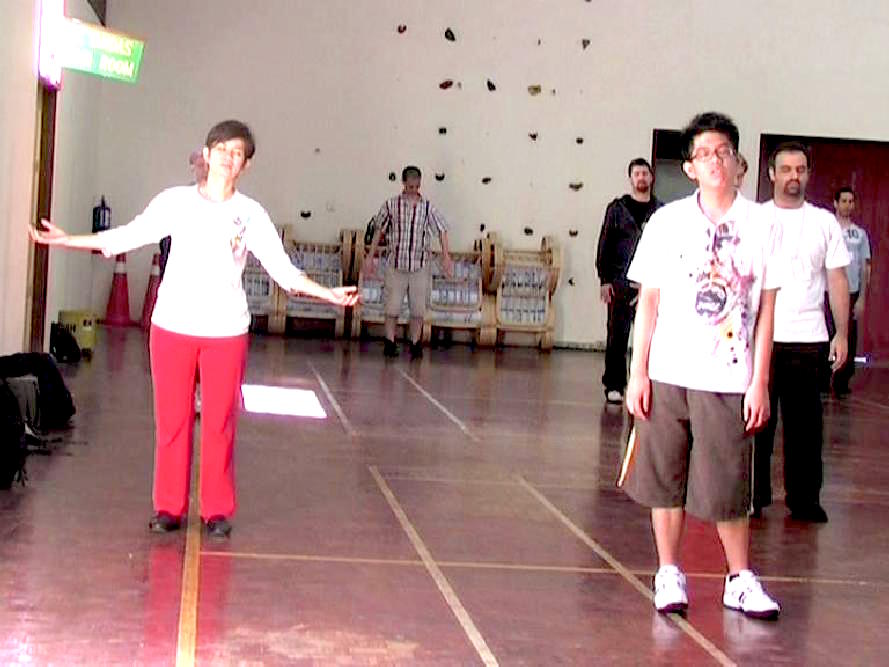VARIOUS WAYS OF BREATHING

Various Ways of Breathing
Question
Many times in your books and on your website you mention breathing out through the mouth. My instructor taught us to breathe only out through the nose. This, I believe came from his Yoga and Zen training. What are the benefits of breathing out through the mouth vs. breathing out through the nose?
-- Carter, USA
Answer
In chi kung, breathing is categorized into two broad types called wen xi and wu xi, or “scholars' breathing” and “warriors' breathing”. Scholars' breathing is gentle whereas warriors' breathing is forceful but not forced.
Scholars' breathing is useful for quiet activities, such as meditation and intellectual work. Warriors' breathing is useful for vigorous actions, like combat and sports.
Breathing out through the nose is usually adopted for scholars' breathing. With the mouth gently close the rate of breathing can be slowed down tremendously, resulting in a deep, gentle breath that is conducive to mental focus and serenity.
Breathing out through the mouth is generally used for warriors' breathing. With the mouth open it is more efficient in disposing off the toxic waste produced by vigorous actions.
When force is exerted such as in a strike, the exponent not only breathes out through the mouth but gives a shout, not so much for scaring the opponent but for exploding internal force. By using appropriate sounds, a skilful exponent can channel internal force from relevant parts of his body.
For example, by using the sound “her-it” he can generate internal force from the qi-hai (abdominal energy field) for a powerful punch or palm strike; by using the sound “yaaaah” he can generate energy from his tan-choong (thoracic energy field) for a forceful tiger claw.
If a martial artist habitually closes his mouth when exerting forceful strikes or kicks, some force may bounce back and become locked, usually at the chest or backbone, causing internal injury. I have treated a few martial artists, some of them are third and fourth dan blackbelts, for this problem.
While most martial artists of other styles do not pay attention to their breathing, which is a crucial factor in energy management, the Chinese masters have developed breath control to a very high level. There are seven types of breathing — not just two. They are in Cantonese pronunciation :“fu”, “kap”, “piai”, “shui”, “jeng”, “hot”, “fong”. “Fu” is breathing out, “kap” breathing in, “piai” holding the breath, “shui” letting the breath flow out spontaneously, “jeng” quietening the breath, “hot” exploding the breath, “fong” releasing the breath.
By employing these various breathing modes in suitable combinations, a kungfu master enhances his stamina, force, agility, stability, judgment, responses and decision making. For example, when observing an opponent he would take a deep breath into his abdomen and adopt the “jeng” mode of breathing. If he has to jump up or away, he would take in a quick breath to his chest “to be as light as a feather” , and as he lands he would use the “fong” mode to lower his remaining breath to his abdomen “to be as solid as a mountain”
If he has to make a series of movements, such as fighting a gang, he would take in a gentle breath, employ the “shui” mode while executing many fast attacks, and complete the cour de grace on the gang leader with the “hot” mode — all in one long breath. This is one of many reasons why while many other martial artists may be panting for breath after ten minutes of action, a kungfu master is still fresh and relaxed after sparring for an hour.
The above is taken from Question 3 December 2000 Part 3 of the Selection of Questions and Answers.
LINKS
Courses and Classes
